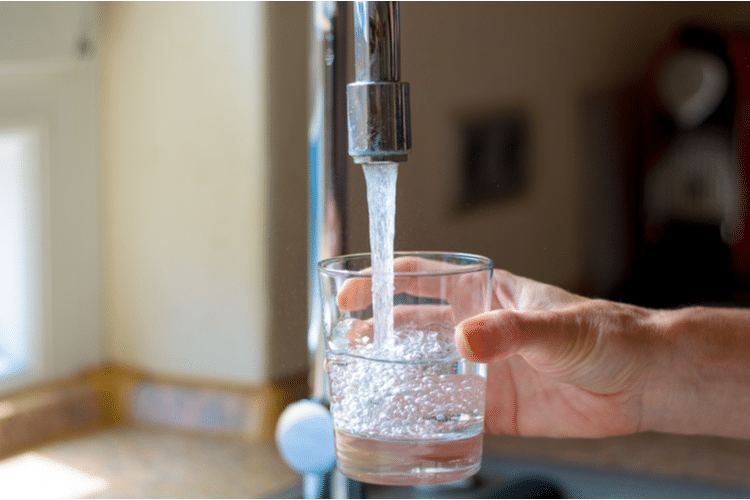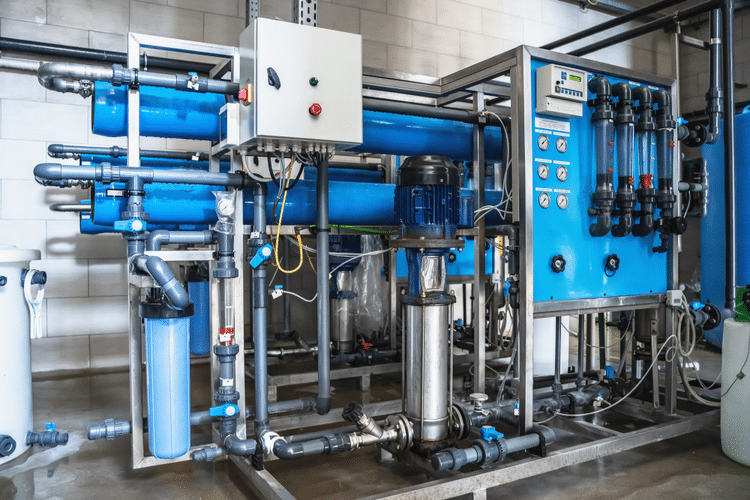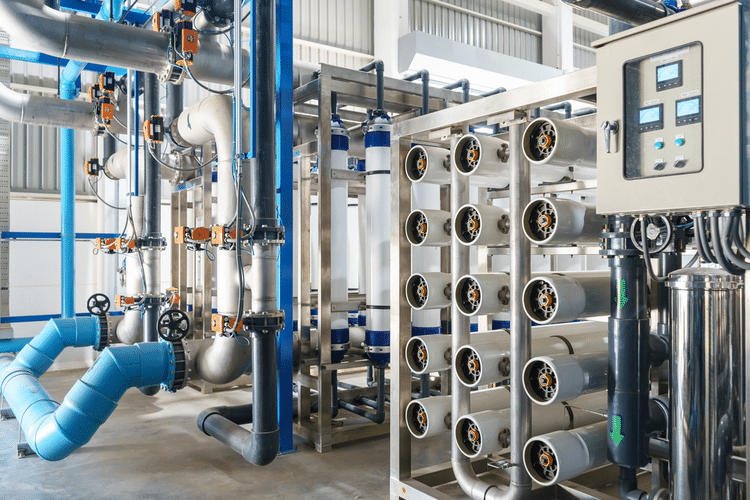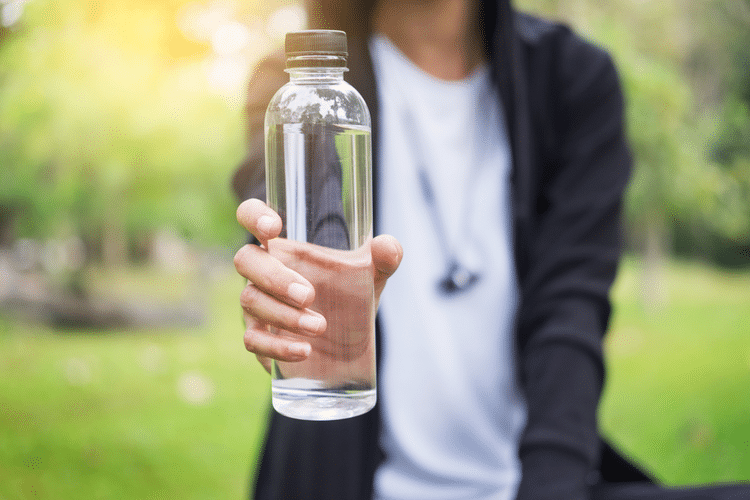Tap water refers to water that comes from a faucet or another water outlet in a house connected to the municipal water system, and is often juxtaposed against well water.
Depending on the treatment methods implemented by water suppliers, or the lack thereof, there is often contaminants in tap water, varying from lead to coliform bacteria.
It’s almost impossible to have contaminant-free tap water unless it’s treated, since tap water is drawn from either surface water or groundwater. Both of these sources can be quite rich with naturally found elements, so the water drawn from them can feature beneficial minerals as well as dangerous heavy metals.

Now, let’s see in more detail where tap water in the United States, Canada, and Australia comes from and the most prevalent contaminants that are often found in them.
Where Does Tap Water Come From?
The United States gets its tap water from surface water and groundwater.
Surface water refers to streams, rivers, lakes, and other natural sources. It’s essentially any body of water that is visible to you. Precipitation and run-off are the two major suppliers to surface water.
Groundwater refers to the water below the ground. Water seeps through the ground and pools in any cracks and crevices in the soil below. Groundwater constitutes about 51% of the drinking water supply of the United States.While surface water is relatively easy to access, groundwater requires some work to get to.
To reach groundwater, municipalities and private water suppliers have to drill big wells. Individuals, for the most part, are required to hire contractors to drill into the ground to create a well.
Where Does Canada Tap Water Come From?
Canada’s tap water comes from surface water and groundwater as well. Canadians also use groundwater influenced by surface water. In this case, rivers or lakes supply the water that’s under the ground. The water from these bodies seeps through the earth, reaches underground crevices, and forms aquifers.
Where Does Australia Tap Water Come From?
Australia’s tap water comes from stored surface water that resides in reservoirs.
Australia is a dry continent/country, which means they are susceptible to droughts quite often. Moreover, there isn’t enough water below the surface to supply Australian residents, so the country only uses a small amount of groundwater for tap water.
As climate change worsens, Australia’s drinkable water supply is decreasing. Due to this, Australia is getting creative and finding other ways to make water drinkable.
Seawater desalination is one of these ways, and it has so far played a large role in Australia’s drinkable water supply.
In this process, ocean water goes through a filter to remove solids. Then, the water is moved into a tank where the reverse osmosis process takes place. The final step involves conditioning or treating the water to make it suitable for consumption.
Since ocean water surrounds Australia, desalination provides access to an endless supply of potentially drinkable water. A few desalination plants are set up across Australia to aid in water supply replenishment.
Where Does Sydney Tap Water Come From?
Sydney’s tap water mostly comes from surface water sources such as Lake Burragorang, the Warragamba Dam, and some other smaller lakes and rivers. These sources make up 80% of the water supply of the city.
The remaining 20% is desalinated seawater. Sydney sources water from the Tasman Sea and processes it in the Sydney Desalination Plant. This plant is especially beneficial to Sydney residents when there is a drought.
What is in Tap Water?
Some common minerals and contaminants found in tap water are:
- Sediment
- Small amounts of metals such as lead, copper, cadmium, and arsenic
- Human waste
- Chemicals such as nitrate, mercury, and fluoride
- Minerals such as iron, sodium, calcium, magnesium, manganese, chloride, bicarbonate, and sulfate
The minerals in water are healthy for you as long as they’re not present in high amounts, and fluoride is good for your teeth as it keeps their enamel strong. However, heavy metals like lead, arsenic, copper, and chemicals like mercury can lead to severe health problems. (You can learn more about these from our article on water contaminants.)
Although not all tap water is contaminated by these problematic elements, it’s ideal to regularly check local water quality reports. We have a few guides that thoroughly cover the tap water quality of cities and states from both the US and other parts of the world:
How is Tap Water Treated?
Water treatment varies depending on where you live. The options usually include filtration and disinfection with chlorine or desalination.
Filtration and Disinfection With Chlorine

In a typical filtration process, the water goes through:
- Coagulation: Coagulation is a process in which a coagulant, like ferric chloride, ferric sulfate, or aluminum sulfate, is added to the water held in a big tank. The positive charge in these chemicals neutralizes the negative charge of contaminants and binds them in clumps, a process referred to as flocculation.
- Sedimentation: Before the coagulation process, the contaminants move freely inside the water. After it, due to flocculation, they’re clumped and heavy, which makes them sink to the bottom of the tank. It’s called sedimentation.
- Filtration: At the end of sedimentation, suspended solids like dirt and sediment and some organic contaminants like algae, clay, and sand stay at the bottom of the tank while the clear water is at the top. Then, that clear water is passed through multiple filters that can remove dissolved contaminants that can’t be clumped together, like chemicals, bacteria, and viruses.
- Disinfection: In the last step, the water is treated with chlorine, chloramines, or both to get rid of any remaining pathogens. Sometimes, fluorine might be added as well to protect tooth health.
Desalination
As explained before, desalination plants work to filter out the salt, bacteria, and other minerals from seawater. Without this process, seawater is undrinkable.

Well Water Treatment
The two previous ways of treating tap water apply if you have city water. If you live in a rural area, you most likely have a well. Well water comes directly from the ground and does not go through government-funded treatment. It’s up to you to filter and treat your water.
Well water treatment usually involves an in-home treatment unit. The most common units are:
- Whole house filtration systems: The groundwater is pushed through filters to remove impurities, similar to how city water is filtered. Although the number and type of these filters might vary depending on the system, they mostly have a reverse osmosis membrane, an activated carbon filter, and an ultraviolet light source.
- Water softeners: In some places, groundwater might be unusually hard and water softening units are the only option for eliminating hard water minerals by employing a process known as ion exchange.
- Distillation systems: In the distillation process, the water is boiled until it all turns to gas so that contaminants can’t find any particles to hold on to. The steam then gets collected and condensed, while the impurities are left behind.
- Disinfection: Disinfection is when the water from the well is treated with chemicals like chlorine or physical disinfectants. Physical disinfectants include UV light, electronic radiation, and heat.
Water treatment is different depending on where you live. The options usually include filtration and disinfection with chlorine or desalination.
Is It Safe To Drink Tap Water?
Tap water is safe to drink in most cities in the United States as city water treatment is well-regulated. However, the same can’t be said for well water treatment since the well owners are responsible for its safety.
That said, whether you own a well or not, you should still keep an eye on water quality reports for your city. Regardless of your water source, you can collect a water sample from your faucets on a constant basis and send it to an EPA-certified lab for analysis.
That way, you’ll be informed about the quality changes in your tap water and identify whether there are new contaminants that might present a cause for concern. Depending on the results, you should take precautions against potential hazards and notify authorities.
Which Country Has the Best Tap Water?
According to the 2022 Environmental Performance Index report prepared by Yale Center for Environmental Law & Policy, countries that have the best and safest drinking water are:
- Finland
- Iceland
- Norway
- Netherlands
- Switzerland
- United Kingdom
These countries provide clean drinking water for all citizens. Moreover, none had a water-related death in the last year.
What Are the Healthiest Alternatives to Tap Water?
Spring water and purified water are the healthiest water to drink, and the best alternatives to drinking tap water.
They’re both strictly regulated by the EPA and FDA. Additionally, the International Bottled Water Association is keen on its members following all the necessary regulations.

Spring Water
Bottled spring water is sourced directly from a water spring that sits in an aquifer and is bottled there. If the values of the groundwater aren’t in line with the EPA and FDA standards, it is then subjected to two main treatment methods:
- Filtration: Water is passed through a filter. Depending on the contaminants, the pore size of this filter might change from 0.2 to 5 microns.
- Ozonation: Ozonation is more effective for disinfecting water from pathogens and microorganisms like bacteria, viruses, and microbes than chlorination. Moreover, since ozone might be converted into oxygen after the process, the taste of the water isn’t affected by it.
Spring water manufacturers aim to protect the taste and benefits of groundwater by keeping treatment to a possible minimum.
Purified Water
In contrast to spring water, purified water is heavily treated. Like tap water, it goes through coagulation, flocculation, sedimentation, and filtration processes.
These treatment methods are often followed by:
- Reverse osmosis – to remove contaminants via a membrane that has a minute pore size
- Distillation – to eliminate contaminants by boiling water until it’s all vapor
- Deionization – to remove mineral salts by ion exchange
- Ozonation – to disinfect water from microorganisms
- Absolute 1-micron filtration – to make sure that no contamination remains.
Conclusion
Tap water comes from either surface water or groundwater sources. Due to all the naturally occurring elements it comes into contact with, it’s often rich with minerals and contaminants like dirt, sediment, chemicals, metals, and microorganisms.
However, it’s also heavily treated before being supplied to households. As a result of filtration and disinfection, a majority of the contaminants are eliminated before the water reaches your faucets.
Still, it’s best to keep water quality reports in check and invest in a filtration method if any worrying contaminants appear.
As an alternative to tap water and filtration systems, you might also opt for bottled water. Since bottled water is strictly regulated by authorities, it’s the safest way to quench your thirst, but it can be expensive.